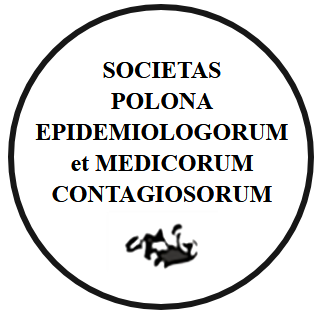RESEARCH PAPER
Tularemia: a case series from an endemic area in Hajnówka County, Norteast Poland
1
Samodzielny Publiczny Zakład Opieki Zdrowotnej im. lek.med. Włodzimierza Mantiuka w Hajnówce, Polska
2
Przychodnia Lekarska WA-MED, Przychodnia Lekarska WA-MED w Wasilkowie, Polska
3
Klinika Chorób Zakaźnych i Neuroinfekcji Uniwersytetu Medycznego w Białymstoku, Uniwersytet Medyczny w Białymstoku, Polska
These authors had equal contribution to this work
Submission date: 2024-04-08
Final revision date: 2024-05-25
Acceptance date: 2024-06-13
Online publication date: 2024-06-18
Publication date: 2024-09-18
Corresponding author
Angelika Maksimiuk
Samodzielny Publiczny Zakład Opieki Zdrowotnej im. lek.med. Włodzimierza Mantiuka w Hajnówce, Samodzielny Publiczny Zakład Opieki Zdrowotnej im. lek.med. Włodzimierza Mantiuka w Hajnówce, Dowgirda 9, 17-200, Hajnowka, Polska
Samodzielny Publiczny Zakład Opieki Zdrowotnej im. lek.med. Włodzimierza Mantiuka w Hajnówce, Samodzielny Publiczny Zakład Opieki Zdrowotnej im. lek.med. Włodzimierza Mantiuka w Hajnówce, Dowgirda 9, 17-200, Hajnowka, Polska
Przegl Epidemiol 2024;78(2):134-144
KEYWORDS
TOPICS
Infectious diseases epidemiologyInfectious diseasesPublic health and health economicsSocial, environmental and occupational medicineBacteriology
ABSTRACT
Background: Tularemia is a zoonotic disease caused by the bacterium Francisella tularensis. It may manifest itself in various clinical forms, but in Poland the ulcerative-glandular or glandular forms of tularemia predominate. One of the routes of infection with F. tularensis is through a tick or insect bite. A patient may show no symptoms or report flu-like symptoms and painful lumps adjacent to the bite site. The differential diagnosis of localized lymphadenopathy accompanied by flu-like symptoms should include tularemia, especially in endemic areas. Lymphadenitis usually requires surgical intervention and is often unsuccessfully treated with beta-lactam antibiotics before the diagnosis of tularemia is established. Objective: The aim of the study was to analyze and present the epidemiology and clinical presentation of tularemia in a highly endemic area, in which ticks are an important vector of F. tularensis. Material and methods: We have analyzed epidemiological and medical reports on the confirmed tularemia cases from Hajnówka County in 2014-2022. We describe three patients from the specific endemic area who were diagnosed with granular tularemia in 2022. Results: We have found high local exposition to Francisella tularensis infection in the Narewka community, generally consistent with the seasonality of tick activity and human activity outdoors. Conclusions: The medical practitioner in such endemic areas must be aware that tularemia should be considered when diagnosing of flu-like symptoms accompanied by lymphadenopathy in patients bitten by ticks or insects in the summer and early autumn months. Early diagnosis and targeted antibiotic therapy are the basis for effective treatment of tularemia.
Share
RELATED ARTICLE
We process personal data collected when visiting the website. The function of obtaining information about users and their behavior is carried out by voluntarily entered information in forms and saving cookies in end devices. Data, including cookies, are used to provide services, improve the user experience and to analyze the traffic in accordance with the Privacy policy. Data are also collected and processed by Google Analytics tool (more).
You can change cookies settings in your browser. Restricted use of cookies in the browser configuration may affect some functionalities of the website.
You can change cookies settings in your browser. Restricted use of cookies in the browser configuration may affect some functionalities of the website.





